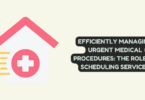
Your Guide to Understanding Workers’ Compensation Claims
Navigating the intricacies of a workers’ compensation claim can be daunting, especially when you’re already facing the stress of an injury or illness that occurred in the workplace.
In Australia, the workers’ compensation system is in place to provide financial support and medical care for those who have been injured at work or suffer from a work-related illness.
This comprehensive guide is dedicated to helping you understand the essentials of the workers’ compensation claim process, outlining your rights under the law, and providing tips on ensuring your claim is successful.
Australian Workers’ Compensation in a Nutshell
Australian workers’ compensation is a government-mandated program designed to protect the health and safety of employees in the workplace.
It’s a “no-fault” system, meaning that you are entitled to compensation whether the injury was your fault, your employer’s fault, or a result of unsafe work practices.
The primary goals of workers’ compensation are to:
- Provide injured workers with proper and timely medical treatment.
- Offer financial assistance if you are unable to work due to your injury.
- Support rehabilitation to help you return to work safely at the earliest opportunity.
Your Rights and Responsibilities
Understanding your rights and responsibilities is paramount in the workers’ compensation process.
It is your responsibility to report the incident as soon as possible after it occurs. Failing to do so can result in a delay or denial of your claim.
You have the right to:
- Lodge a workers’ compensation claim within specific time frames.
- Be informed about the progress of your claim.
- Seek legal advice and representation if needed.
The Claims Process Demystified
The workers’ compensation claims process can be broken down into several key steps:
Step 1: Report the Incident
Immediately notify your employer of the incident that caused your injury or illness. This is often done by completing a report including details of the event and the injury you’ve suffered.
Step 2: Seek Medical Treatment
You have the right to choose your own treating doctor. Your employer’s insurer will cover the cost of your initial visit, provided that the doctor is approved by the insurer.
Step 3: Lodge a Claim
Your employer should provide you with a claim form or direct you to the relevant authority. It’s crucial to lodge your claim within the specified time frames to avoid delays or complications.
Step 4: The Investigation
The insurer will investigate your claim, which may involve obtaining further information or reports from your employer, doctors, and other relevant parties.
Step 5: Claim Determination
The insurer will assess your claim based on the evidence provided and decide whether to accept or reject your claim. If accepted, you will receive compensation based on the type and severity of your injury.
Maximising the Success of Your Workers’ Compensation Claim
To increase the likelihood of successful workers’ compensation claims, there are several best practices to follow:
- Act promptly: Report your injury or illness and lodge your claim without delay.
- Keep detailed records: Maintain all documents, receipts, and correspondence related to your claim.
- Be consistent and honest: Provide truthful and consistent information throughout the entire process.
- Seek legal advice: A workers’ compensation lawyer can provide valuable guidance and support, particularly if your claim is complex or disputed.
Red Flags That Could Diminish Your Claim’s Chances
Certain red flags may cause the insurer to scrutinise your claim more closely, potentially leading to a denial or reduction in benefits. These may include:
- Delay in reporting the injury
- Inconsistencies in your reporting or medical records
- Engaging in activities that are inconsistent with the extent of your injury
Wrap Up Your Claim with These Tips
Successfully concluding your workers’ compensation claim requires attention to detail and diligence. Here are tips to wrap up the process effectively:
- Engage in rehabilitation programs if they are offered, as they can speed up your recovery and return to work.
- Keep your employer informed of your progress, especially if you anticipate a return to work or if your condition deteriorates.
- Understand the limitations of your worker’s compensation benefits, such as the duration and type of support you are eligible for.
In Summary
Workers’ compensation claims can often be overwhelming, but having a clear understanding of the process can make a significant difference. Remember, you are entitled to seek advice and representation if you need it.
By following the guidelines provided, you can ensure your claim is handled with the care and attention it deserves, potentially leading to a successful outcome that protects your financial, physical, and mental well-being.






